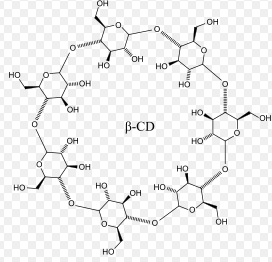How To Remove PFOA From Water
In the 1950’s, people wanted products that were easy to clean. Companies thought they had found the answer with Teflon non-stick coating, stain-resistant carpet, and waterproof textiles. However, they were using a toxic chemical known as PFOA, also known as C8. It has made its way into everything from cookware to fire-fighting foam to food packaging. When it’s present on cookware, it can be inhaled and has bee n linked to flu-like symptoms. Studies have shown it can cause cancer in animals, as well as a host of immune and endocrine system problems.
What is PFOA?
Perfluorooctanoic acid, sometimes known as PFOA, is a synthetic chemical that has been used to make a variety of commercial and consumer goods, such as nonstick cookware, stain-resistant clothing and carpeting, food packaging, and firefighting foams.
PFOA is dangerous for the environment, and there’s evidence that points to it being dangerous for humans, too. It’s easily absorbed orally, and sticks around in the liver and kidneys. It can stay in the body for up to 9 years, and is most likely playing a role in all kinds of diseases and health problems. Right now, there’s not a lot of data about how bad the effects are for humans.
As a persistent organic pollutant (POP), PFOA can linger in the environment for a very long time and is difficult to degrade in the environment. Through industrial discharges, the use and disposal of consumer products, and the breakdown of other fluorinated chemicals in the environment, PFOA can get into the water supply.
Is PFOA harmful?
According to studies, PFOA exposure can have harmful impacts on one’s health, including an increased risk of cancer, delays in development, and weakened immune systems. A health advisory level of 70 parts per trillion (ppt) for PFOA in drinking water has been established by the Environmental Protection Agency (EPA). If you are worried about the presence of PFOA in your water, you might wish to have it tested by your neighborhood water provider or a licensed laboratory.
Even if you don’t use household items with PFOA, it’s practically impossible to avoid. You can even be exposed to PFOA in dust. Studies have revealed that most people worldwide have a very low level of PFOA in their system, with that amount being higher for those who live near contaminated water and those who work in factories where it’s present. Once PFOA is in the water supply, it’s nearly impossible to remove and it does not break down. In 2015, a state of emergency was declared in two towns because their drinking water was so contaminated. The EPA has only just established health advisories for PFOA, and plans to continue its research into the effects.
Do water filters remove PFOA from water?
PFOA removal efficiency varies depending on the type of filter used and the amount of PFOA present in the water. It’s possible that some filters are better than others at eliminating PFOA.
It has been demonstrated that activated carbon filters, like those found in pitcher-style or faucet-mounted filters, are an efficient way to remove PFOA from water. PFOA can also be eliminated through reverse osmosis systems, which use semipermeable membranes to filter out pollutants.
If you are concerned about the presence of PFOA in your water, it is crucial to select a filter that has received certification from a recognized agency, such as NSF International or the Water Quality Association, and to operate and maintain the filter in accordance with the manufacturer’s instructions. It’s also critical to keep in mind that while filters might aid in removing PFOA from drinking water, they might not address exposure from other channels, such tainted food or the environment.
What’s the solution to remove PFOA from water?

These rings act like nets that catch PFOA molecules
Removing PFOA from water has become easier over the years, as scientists created a new filter that will make cleaning up the toxins way more efficient. The filter is made from beta-cyclodextrin. It’s a bio-renewable sugar that occurs naturally and comes from cornstarch. Scientists at Northwestern University transformed the sugar molecule into a polymer through a process called “cross-linking.” The cyclodextrin connects with another molecule, decafluorobiphenyl, or DFB. The DFB molecule attracts the toxin, and thanks to the ring-like structure of the cyclodextrin, the polymer is perfect for capturing and sticking to the toxins!
When researchers tested out the filter, they found it removed a whopping 95% of the PFOA from water. Compare that to the next filter – made from activated carbon – which only captures around 50%. The new polymer is also reusable after a bath in methanol and works in conditions that activated carbon filters can’t. As if those weren’t enough reasons to love this polymer, it can be “reprogrammed” for other toxins by switching out the cyclodextrin for another molecule. It’s like changing out a net to catch smaller or bigger fish.
Preventing continued exposure to PFOA
As for preventing continued exposure to PFOA, there are several things you can. First of all, never buy anything cookware with non-stick. This includes Teflon, T-fal, and Calphalon. You can to go with stainless-steel and cast iron. There’s a bit more maintenance required, but it’s totally worth it. For fabrics on furniture, ask about if they were treated with water and stain-resistant chemicals. Stain treatments like Stainmaster and Gore-Tex also use PFOA. Since fast-food containers even contain PFOA, don’t hit up food in their original containers. That will allow the chemical to seep into your dinner.
For information on how to filter PFOA from your drinking water at home, check out this thread on Quora.




